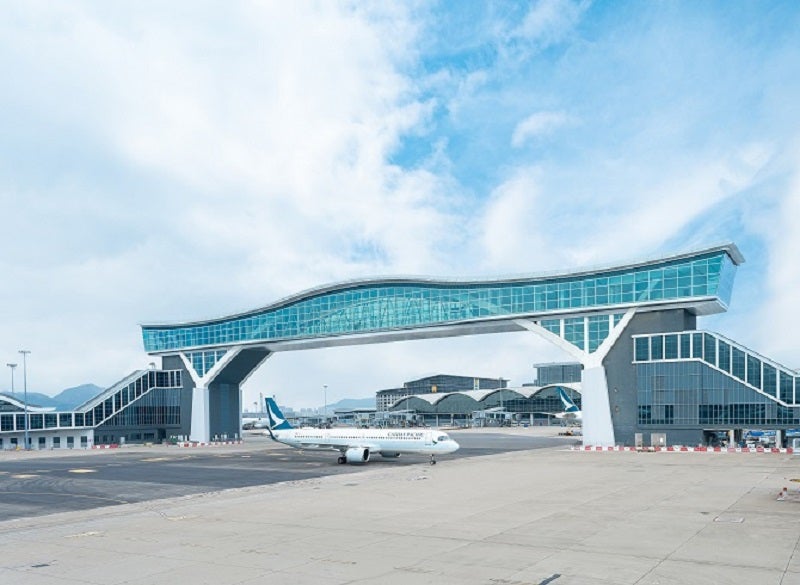
Hong Kong International Airport (HKIA) has opened its 200m-long Sky Bridge connecting Terminal 1 (T1) and T1 Satellite Concourse (T1S).
The new 28m-high footbridge is claimed to be the world’s longest airside bridge, and has the space to enable the largest passenger aircraft A380 to pass below it.
Prior to the launch of the bridge, passengers at the airport used to commute to and from T1S using a shuttle bus for boarding and disembarkation.
Spanning a taxiway at HKIA, the new bridge comprises escalators as well as an automated walkway.
The Sky Bridge features a glass floor, allowing passengers to watch an airplane passing under them.
HKIA also plans to open an observation deck, a catering outlet, and a shop on the Sky Bridge in a phased manner.

US Tariffs are shifting - will you react or anticipate?
Don’t let policy changes catch you off guard. Stay proactive with real-time data and expert analysis.
By GlobalDataAirport Authority Hong Kong Engineering and Technology executive director Ricky Leung said: “Sky Bridge is aspired to be the iconic feature at HKIA. It offers passengers a spectacular view of the entire airport with the nearby landscape as the backdrop.
“Passengers have a brand new spot for snap shots before they go on with their journey. Sky Bridge is a part of our efforts in renewing and enhancing the passenger experience at HKIA.
“Together with other upgraded airport facilities, we look forward to welcoming passengers from around the world.”
The bridge is part of a broader HK$9bn ($1.15bn) overhaul project at the airport.
In March this year, HKIA deployed an Autonomous Patrol Car (APC) developed by Teksbotics and its technology partner UISEE to emulate real-world patrolling.



